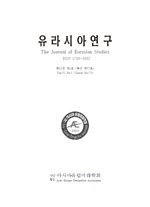- 영문명
- The Business Activities and Innovative Management Strategies on Samsung Chairman Kun-Hee Lee
- 발행기관
- 아시아.유럽미래학회
- 저자명
- 이건희(Kun-Hee Lee)
- 간행물 정보
- 『유라시아연구』제3권 제1호, 1~49쪽, 전체 49쪽
- 주제분류
- 사회과학 > 사회과학일반
- 파일형태
- 발행일자
- 2006.06.30
8,680원
구매일시로부터 72시간 이내에 다운로드 가능합니다.
이 학술논문 정보는 (주)교보문고와 각 발행기관 사이에 저작물 이용 계약이 체결된 것으로, 교보문고를 통해 제공되고 있습니다.

국문 초록
According to professor John Corter of Harvard University, one of the main factor that cause corporate to experience failure in reform is due to the existing cooperate cultural that may hamper the smooth penetration. Hence when cooperate is building ethical culture, it is necessary to construct an infrastructure that brings ethical execution in the center of organizational management process. Yet the reform, constructing a new ethical infrastructure, can only be driven by the CEO of the organization. Chairman Kun-Hee Lee, the head of the Samsung, has set his own ethical spirit further building an infrastructure with ethical management mindset that applies from a high-ranked executive to low-ranked manager: through this Chairman Kun-Hee Lee, as a guiding figure, has advanced powerful reform even to bring change in the mindset of CEO's, other executives and its employees. Samsung's ethical infrastructure lies in “to produce the superlative goods and services based on competent human and technological resources to make a contribution to human society” and in management philosophy that is regulating the creditability or trustiness of the company. Thus Samsung, through the regular sessions of education and forwarding the ethical infrastructure, has developed into leading group not only in domestic sphere but also maintained its peculiarity in global sphere. The Samsung's management reform strategy began with “The Frankfurt declaration” on June 1993 and the epochal event has altered Samsung's constitution. At that time, Samsung Electronics were fiercely competing against currently known as LG Electronics in a domestic market yet applying the “quality based management” and recruiting competent human resources as well as investing more on R&D to stand as globally recognized first-class manufactured goods, Samsung Electronics became the leading electronics sector in domestic economy. Furthermore overcoming the IMF crisis in the late 90's, Samsung was put as a leading figure among the corporate with globally competent information technology sources in year 2000. In year 1992, a year before starting the grand reform strategy, Samsung's total profits before tax stayed 230 billion Korean Won but by the end of 2004, the total profits before tax became 60 times more, 14 trillion Korean Won. At the same time, the debt ratio was reduced from336% to 90% and moreover, Samsung's brand value hiked up as competent as No.1 brand at a global market: they became one of the leading companies in the world. In addition, Samsung carries the vision of an enterprise based on sharing and coexisting humanity, Samsung, through the active social contribution to the digitally neglected social class, not only in Korea but also in countries like Russia and Southeast Asia, has strengthened its brand image, friendliness and trustiness as well as taking full responsibility as an undertaking citizenry. Due to the Chairman Kun-Hee Lee's endeavors to build Samsung as the world's best company, active corporate activities and incessant management strategies led Samsung as the leading domestic enterprise in the global market also one of the most preferable company to invest among the Foreign Direct Investors. Currently, Samsung is putting all-in efforts in preparation for anew management project for coming decade along the training employees to become globally competent: they are not just leading a comfortable life with present time, the biggest profit in history, rather they are still seeking for reform or change in preparation to future: the exploratory question of what could Samsung do to compete in the future global market? Such a forwardly put vision of Samsung could be guidance and may well be considered to search for future direction of Korean corporate and society.
영문 초록
목차
Ⅰ. 서론
Ⅱ. 기업의 경영전략의 학술적 정의와 특성
Ⅲ. 삼성 이건희 회장의 기업 활동과 시대적 구분
Ⅳ. 글로벌 CEO 이건희 회장의 경영혁신 전략
Ⅴ. 신경영 전략 추진성과 분석 및 21세기 비전
Ⅵ. 결론
참고문헌
키워드
해당간행물 수록 논문
- 유럽연합(EU)입장에서 본 이슬람권 문화
- Global Capital, National Markets and New Defenses: Proposal for an East Asian Opt-In Takeover Law
- 린 6시그마(Lean Six Sigma)도입을 위한 통합방법론에 관한 연구
- Transforming North Korea: South Korea’s Attempts at Engaging Pyongyang
- 동아시아 금융협력의 현황과 과제
- 세계화시대, 동북아의 불확실성과 한반도의 미래
- 三星그룹 글로벌 CEO이건희 회장의 시대별 기업 활동과 경영전략
- 옵션가격에 내재된 정보내용의 추정 및 유용성
- 최근 유럽연합(EU)의 과학기술정책 동향과 시사점
- 분재예술원 성범영(成範永) 원장의 생애와 문화예술 창조
- The Role and Impact of Global Private Equity Firms in the Korean Capital Market
- Problem und Aussichten für die Gründung der Ostasiatischen Wirtschaftsgemeinschaft
- 남북경협 현황과 활성화 방안
- 인수기업과 목표기업의 소유구조와 기업가치에 관한 연구
- The Problem and Perspective of European Integration
- Abriss zur Bildungspolitik in Deutschland nach 1945
참고문헌
관련논문
사회과학 > 사회과학일반분야 BEST
- AI와 디지털 문화 산업의 결합에서 저작권 및 윤리적 규범 준수의 필요성 연구
- 종합병원 간호사의 환자안전문화인식과 조직의사소통만족이 안전간호활동에 미치는 영향
- 임상간호사의 환자안전간호활동에 영향을 미치는 요인
사회과학 > 사회과학일반분야 NEW
더보기최근 이용한 논문
교보eBook 첫 방문을 환영 합니다!

신규가입 혜택 지급이 완료 되었습니다.
바로 사용 가능한 교보e캐시 1,000원 (유효기간 7일)
지금 바로 교보eBook의 다양한 콘텐츠를 이용해 보세요!




